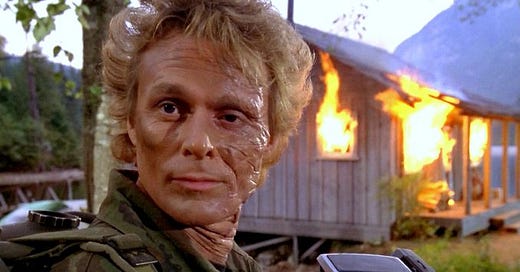In reexamining the idea of villains in RPGs, I've come to a conclusion about what kind of villain really gets to players. It's not the Lord Zedd super villainy villains that your players are motivated to take out. It's not the unbelievable badass who seemingly can't be stopped. It's the villain who's the biggest nuisance to the party. So often, this villain isn’t the big bad mustache-twirler (at least not initially) but rather a low-level threat that just keeps coming back. By the time your fighter finally pulls his sword out of this guy’s guts, he’ll wish he did it back when this guy was just a low-level minion. How does a low-level threat turn into the most infuriating villain of all time though? Let’s discuss.
In my previous article The Players Make the Villains, I discussed the idea that the players will ultimately decide who the most important villain in your game is. They do this through their actions which are being reacted to by the NPCs and factions in your world. Remember though that players aren’t the only ones who stockpile resources and power to further goals in your world. The other factions do this too, especially the ones who want to stick it to the players in response to past slights. Make no mistake, players will piss off a lot of different people during their come-up. How do you determine which ones go on to swear eternal revenge though? Reaction rolls. When players leave an enemy alive at the end of combat, make a reaction roll. When players one-up a political or ideological adversary, make a reaction roll. Set the percentage chance of a positive, neutral or negative reaction wherever you feel is appropriate and then roll the percentile dice. A positive result might mean that the victim has a change of heart or feels a debt of gratitude to the party for sparing his life. A neutral result means they go their separate ways for the time being with no malice. A negative result means it’s payback time.
So let’s say that the players encounter a gang of bandits at level 1. They kill all but one of the bandits and you decide that there’s a 65% chance of a negative reaction from the last survivor. You roll under a 65 on the percentile dice for his reaction. Now you've got yourself a man looking for retribution. He gets away from the party and begins plotting his revenge. As the players grow in strength, he will too. Over the course of the campaign, this bandit may resurface and the more he survives contact with the party, the more of a threat he becomes.
There are several great examples of this in media. Punisher villain Jigsaw came into being after Frank Castle decided to smash mobster Billy Russo’s face through a window instead of killing him. Murdoc from the original MacGyver series (pictured above) likewise returned again and again with elaborate plots to kill MacGyver after appearing to die following the last attempt. The best example of this is actually the nemesis system in Shadow of Mordor. When an enemy kills you, he becomes more powerful and will move up the ranks of Orcs as long as he's left alive. This is the template for the persistent nuisance adversary. He got away from you and will continue to raise his power level if left unchecked. The cool thing about RPGs though is that you can create these kinds of adversaries from multiple situations. Anyone who is slighted by the players is a potential menace to them.
All of this comes back to a theme I repeat often: in a living world, actions have consequences. As an extension of that, people who get rear-ended by your party may seek retribution. It's not something that can be forced, but the circumstances are present for the rise of the annoyingly persistent adversary who just won't die. When the party finally does get them though, prepare for the ultimate RPG catharsis.




